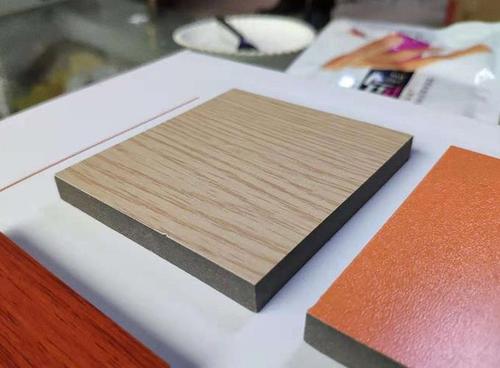
Measures and methods to solve veneer quality
- Categories:Company News
- Author:
- Origin:
- Time of issue:2019-04-23
- Views:0
(Summary description)Treatment of glue penetration or crack in decoration
Measures and methods to solve veneer quality
(Summary description)Treatment of glue penetration or crack in decoration
- Categories:Company News
- Author:
- Origin:
- Time of issue:2019-04-23
- Views:0
1. Treatment of glue penetration or crack in decoration
When there are glue penetration or cracks on the surface of the veneer, increase the thickness of the veneer or sandwich a layer of paper between the veneer and the substrate for buffering, and the moisture content of the veneer should not be too high. In addition, the hot pressing temperature and pressure should be appropriately reduced. After hot pressing, the plates should be stacked face to face to reduce water evaporation. Adjust the viscosity and amount of adhesive, increase the proportion of solid content of adhesive appropriately.
2. Treatment of grease or color spots on the surface of the veneer and through the bottom color
When the surface of the decoration paste is polluted by oils, lipids and waxes, it can be dissolved and wiped with organic solvents. The commonly used solvents are alcohol, ether, benzene and acetone. It can also be wiped with weak alkaline sodium hydroxide or sodium bicarbonate, and then wiped with water. Most of the color spots on the surface of the veneer are caused by tannins, pigments and iron ions in the wood, which can be erased by hydrogen peroxide or 5% oxalic acid. When the bottom color of the board surface is transparent, use a thicker veneer or paper with the same color as the veneer to stick on the base material first, and then veneer decoration. In addition, the base material is colored first, and then pasted with veneer method to color the base material. The base material is colored directly by coating method, or a small amount of colorant is added into the adhesive to color at the same time.
3. Blistering and degumming occurred in a small area
The degumming or bubbling place should be deflated before gluing. Use a sharp knife to cut the thin wood at the blister along the grain direction for venting. Use a thick syringe to inject the strong glue into the blister, and then press it with an iron. For slightly larger blisters, use a sharp blade to cut off the veneer at the blister along the grain direction and scrape off the residual glue. Select a similar veneer to trim it to the required size and re glue it with strong glue. However, it should be noted that the edge of the veneer is also cut into an inclined plane to ensure that the repaired veneer is in contact with the original veneer slope, leaving no seam trace, and the surface is smooth.
4. Treatment of large area bubbling and degumming
When there is a large area of bubbling and degumming, and the number of workpieces is large, only using the repair method can not fundamentally solve the problem, we need to query the reasons, analyze and discuss again, and find the corresponding measures.
Firstly, peel off the veneer material from the surface of the substrate, and observe the bonding of the veneer material, the substrate and the adhesive at the blister. If there is almost no adhesive left on the surface of the base material, it indicates that the base material does not match the adhesive used. The adhesive can be replaced or modified, or the wood-based panel with good quality can be used, or the surface of the base material can be sanded to obtain better surface quality, so as to improve the surface bonding strength. If there are many base material debris on the torn facing material, it indicates that the internal bonding strength of the base material does not meet the strength requirements of the adhesive facing material. The simplest solution is to select the base material that meets the E1 or E0 level. However, due to the tight construction period and the existing raw materials can not be wasted, it is impossible to replace the adhesive or substrate. The following is the solution from the process by using the existing materials.
The surface treatment process of the substrate: to solve the bonding force of veneer to achieve good results.
Sanding and cleaning the surface of the substrate, spraying low solid content and low viscosity (about 8 ~ 10s) sealing primer, the substrate treatment process is, because of its fast drying speed, it is not suitable for thick coating, generally spray once, each time the amount of coating is 60 ~ 90g / m2, after the coating is completely dry, the appropriate amount of sanding can be applied to paste the finishing material. The sealing primer has good viscosity and permeability, can penetrate into the depth of the substrate to form a film, plays a sealing role, prevents the moisture absorption of the substrate, at the same time, it also has the function of sticking to the substrate debris, and enhances the bonding strength of the substrate surface. However, we should consider the matching of the sealing primer, adhesive and topcoat. The sealing effect of "didebao" primer is very good. In a word, spraying sealing primer is a good measure to solve the problem of insufficient bonding strength or loose surface.
5. The surface of the adhesive is uneven
In serious cases, the veneer can be planed off to trim the surface of the parts. The main reason is that the thickness deviation of the substrate is large, and the thickness deviation can be reduced and the change curve is stable through the original sanding, which can basically meet the requirements of the veneering process. In addition, the high wax content on the surface of plain wood-based panel will hinder the infiltration of glue and reduce the bonding strength.
Scan the QR code to read on your phone
Hot News
Quick Links
Social Media


Copyright © 2020 Changzhou Maite Decorative Material Co., Ltd. 苏ICP备2021002624号-1
Copyright © 2020 Changzhou Maite Decorative Material Co., Ltd. 苏ICP备2021002624号-1




 0519-88496008
0519-88496008

 Message
Message 